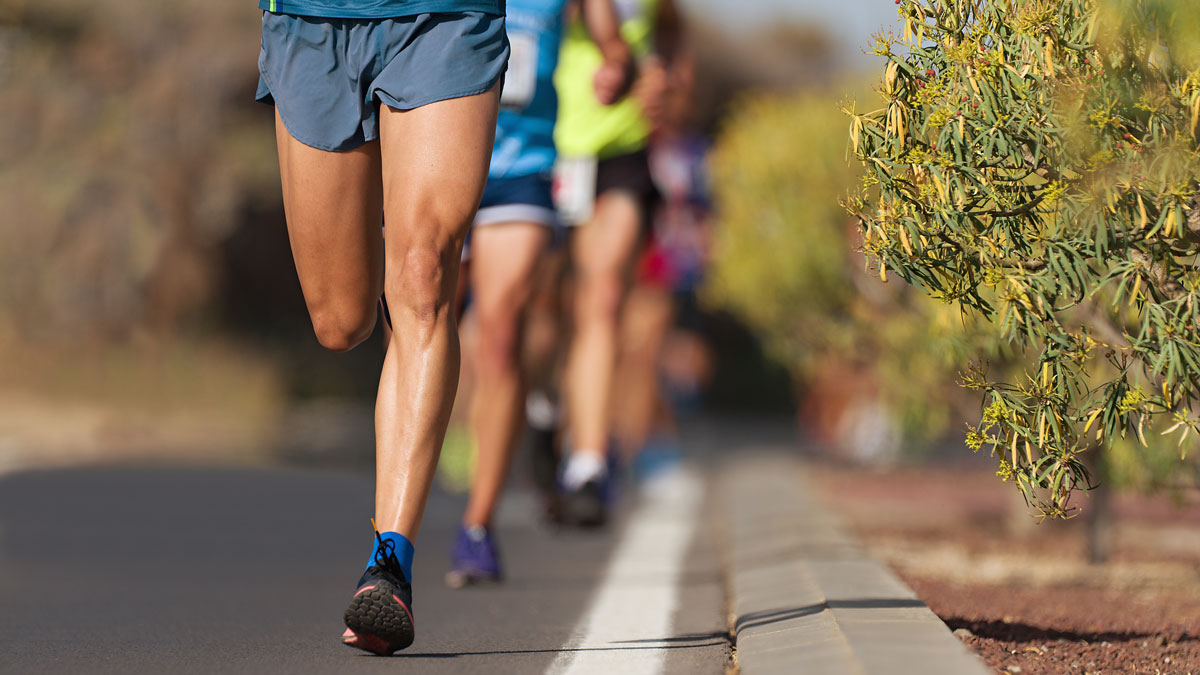Boost Your Running Strategy with Proven Techniques
Boost Your Running Strategy with Proven Techniques
Blog Article
Managing Common Running Pains: Causes, Solutions, and Prevention
As runners, we typically come across various pains that can impede our performance and pleasure of this physical activity. By checking out the origin factors for these operating pains, we can discover targeted remedies and preventative actions to make certain a smoother and more fulfilling running experience.
Common Running Discomfort: Shin Splints
Shin splints, an usual running pain, frequently result from overuse or improper shoes throughout physical activity. The recurring anxiety on the shinbone and the tissues affixing the muscle mass to the bone leads to inflammation and discomfort.
To protect against shin splints, individuals need to gradually boost the strength of their workouts, use ideal footwear with appropriate arch assistance, and maintain flexibility and strength in the muscle mass bordering the shin. If shin splints do occur, first treatment includes remainder, ice, compression, and altitude (RICE) Additionally, integrating low-impact activities like swimming or biking can aid keep cardiovascular physical fitness while permitting the shins to heal. Persistent or serious situations might call for clinical evaluation and physical therapy for efficient monitoring.
Common Running Pain: IT Band Disorder
Along with shin splints, an additional widespread running discomfort that professional athletes commonly run into is IT Band Disorder, a condition brought on by inflammation of the iliotibial band that runs along the external upper leg and knee. IT Band Disorder normally materializes as pain on the outside of the knee, especially throughout tasks like running or cycling. The iliotibial band is a thick band of fascia that connects the aware of the shin, and when it comes to be swollen or limited, it can rub against the upper leg bone, causing discomfort and pain.
Joggers experiencing IT Band Syndrome may notice a painful or aching sensation on the external knee, which can aggravate with continued activity. Variables such as overuse, muscle inequalities, incorrect running form, or poor workout can contribute to the growth of this condition. To avoid and ease IT Band Syndrome, joggers must concentrate on extending and strengthening workouts for the hips and thighs, appropriate footwear, steady training progression, and addressing any kind of biomechanical issues that might be intensifying the problem. Neglecting the symptoms of IT Band Disorder can result in persistent issues and long term recovery times, stressing the significance of very early intervention and correct management approaches.
Typical Running Pain: Plantar Fasciitis
:max_bytes(150000):strip_icc()/effective-30-minute-running-workouts-2911891-0927-70272e09ac83449cadb9f1ce51656c0c.jpg)
Plantar Fasciitis can be attributed to various elements such as overtraining, incorrect shoes, working on tough surface areas, or having high arcs or level feet. To avoid and minimize Plantar Fasciitis, joggers can include extending workouts for the calf bones and plantar fascia, put on encouraging shoes, keep a healthy and balanced weight to lower pressure on the feet, and progressively raise running intensity to prevent sudden stress and anxiety on the plantar fascia. If symptoms persist, it is recommended to consult a health care expert for proper diagnosis and treatment alternatives to resolve the problem properly.
Usual Running Discomfort: Runner's Knee
After attending to the difficulties of Plantar Fasciitis, one more prevalent issue that joggers usually encounter is Runner's Knee, a common running pain that check out more here can prevent sports performance and cause pain throughout exercise. Runner's Knee, additionally referred to as patellofemoral pain syndrome, shows up as pain around or behind the kneecap. This condition is often connected to overuse, muscular tissue discrepancies, improper running strategies, or issues with the alignment of the kneecap. Joggers experiencing this pain may really feel a boring, hurting pain while running, going up or down staircases, or after extended durations of sitting. To avoid Jogger's Knee, it is important to incorporate correct warm-up and cool-down regimens, preserve solid and balanced leg muscular tissues, use appropriate shoes, and gradually boost running intensity. If signs linger, consulting from a healthcare professional or a sporting activities medicine expert is advised to identify the underlying reason and establish a customized therapy strategy to reduce the discomfort and avoid more problems.
Typical Running Discomfort: Achilles Tendonitis
Generally afflicting runners, Achilles Tendonitis is an agonizing problem that affects the Achilles tendon, causing discomfort and prospective constraints in exercise. The Achilles tendon is a thick band of tissue that links the calf muscle mass to the heel bone, critical for tasks like running, leaping, and strolling - look at this site. Achilles Tendonitis commonly develops because of overuse, inappropriate shoes, inadequate stretching, or unexpected boosts in physical task
Signs of Achilles Tendonitis consist of pain and rigidity along the tendon, especially in the early morning or after durations of inactivity, swelling that intensifies with activity, and perhaps bone stimulates in chronic cases. To protect against Achilles Tendonitis, it is vital to extend effectively in the past and after running, put on proper footwear with proper assistance, progressively enhance the intensity of workout, and cross-train to reduce recurring anxiety on the tendon.
Conclusion

Report this page